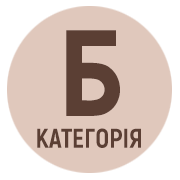PEDAGOGICAL TECHNOLOGY FOR THE FORMATION OF AESTHETIC COMPETENCE OF STUDENTS IN THE PROCESS OF LEARNING PROFESSIONAL DISCIPLINES
DOI:
https://doi.org/10.32782/2412-9208-2024-3-255-263Keywords:
aesthetic competence, university students, pedagogical technology, professional disciplines, educational processAbstract
The article is devoted to the substantiation of the pedagogical technology of forming the aesthetic competence of students in the process of learning professional disciplines. The authors used the following methods: observation, surveys, questionnaires and interviews; the formation of students' aesthetic competence was studied, the potential of professional disciplines in the formation of students' aesthetic competence was monitored, the factors affecting this process, as well as the reasons that are obstacles to the aesthetic development of students' personalities. The authors assume the interpretation of «pedagogical technology» in the context of a number of approaches: firstly, scientific, according to which pedagogical technologies are a part of pedagogical science, which covers the study, development of educational goals, content and methods, carries out the design of pedagogical processes; secondly, descriptive, which describes the sequence of actions in achieving the defined goal with the use of defined methods; thirdly, effective, within which instrumental and methodological pedagogical tools function. Attention is focused on the position according to which the teaching technology is explained as a holistic phenomenon containing didactic, psychological, general pedagogical procedures, which are used to change the forms of behavior and activity of pupils. The focus of the educational process on the formation of students' aesthetic competence is achieved through the use of modern learning technologies, in particular modeling. According to the authors, a significant advantage of modeling is the ability to comprehensively approach the study of the pedagogical object, in particular, the aesthetic competence of students. Relying on a technological approach contributes to the development of a model for the formation of students' aesthetic competence in the process of learning professional disciplines. The goal of the pedagogical technology proposed by the authors is the formation of aesthetic competence of students in the process of learning professional disciplines. For the implementation of the technology, the following principles were taken into account: humanization and humanitarianization, value orientation, systematicity and complexity, aestheticization. Attention is drawn to the dominant role of art as a means of attracting the individual to spiritual values and to the importance of the principle of aestheticization in highlighting the aesthetic potential of professional disciplines and forming students' aesthetic attitude to learning. The following functions of pedagogical technology for the formation of students' aesthetic competence in the process of learning professional disciplines are distinguished: informational, educational and transformation functions. In order to implement the technology of forming the aesthetic competence of students in the process of teaching professional disciplines, a technological map was created as a description of the process in the form of a step-by-step sequential action (often in graphic form) with an indication of the tools used.
References
Бабков М. І. Формування естетичної культури у студентів юридичних вищих навчальних закладів: автореф. дис….канд… пед. наук: спец. 13.00.07. Луганськ, 2010. 20 с.
Білавич Г. Художньо-естетична підготовка майбутніх учителів початкової освіти: етнопедагогічний вимір : навч.-метод. рекомендації. Івано-Франківськ, 2004. 48 с.
Джигун Л. М. Естетичне виховання курсантів Національної академії Прикордонних військ України засобами зарубіжної літератури: автореф. дис. на здобуття наук. ступеня канд. пед. наук: спец. 20.02.02. Хмельницький, 2001. 21 с.
Калашник Н. Г. Густосологія. Теорія і практика формування естетичних смаків: навч. посіб. Запоріжжя: Поліграф, 2004. 268 с.
Карташова Ж. Ю. Формування музичного смаку майбутнього вчителя музичного мистецтва у процесі інструментально-виконавської підготовки. Педагогічна освіта: теорія і практика: Збірник наукових праць. Кам’янець-Подільський, 2018. Вип. 24 (1). 2018. Ч.2. С. 69–75.
Кондрашова Л. В. Технологія і методика особистісно-орієнтованого навчання: метод. посібник. Кривий Ріг : КДПУ, 2006. 352 с.
Косінова О. Педагогічна технологія формування естетичної складової професійної підготовки майбутніх офіцерів-прикордонників. дис. канд. пед. наук. Хмельницький, 2012. 221 с.
Огляд інтерактивних методів. URL: http://multycourse.com.ua/ua/page/19/69.
Орлов В. Д. Мистецтво і педагогічні технології. Мистецтво та освіта. 2001. № 1. С. 8–12.
Орел-Хайлік Ю. Формування естетичного мислення майбутніх лікарів. Інноваційна педагогіка. Вип. 59. 2023. С. 163–167.
Пєхота О. М. , Кітенко А. З. , Любарська О. М. Освітні технології :навч.-метод. посіб. Київ : А.С.К., 2001. 256 с.
Потапчук Т., Клепар М., Мірошніченко В. Наукові погляди на формування естетичного смаку майбутніх педагогів. Збірник наукових праць Національної академії Державної прикордонної служби України. Хмельницький, 2022. № 3. С. 429–441.
Стрілько В. В. Формування естетичних смаків старшокласників у роботі загальноосвітньої школи. Харків: Колегіум, 2011. С. 69–70.






